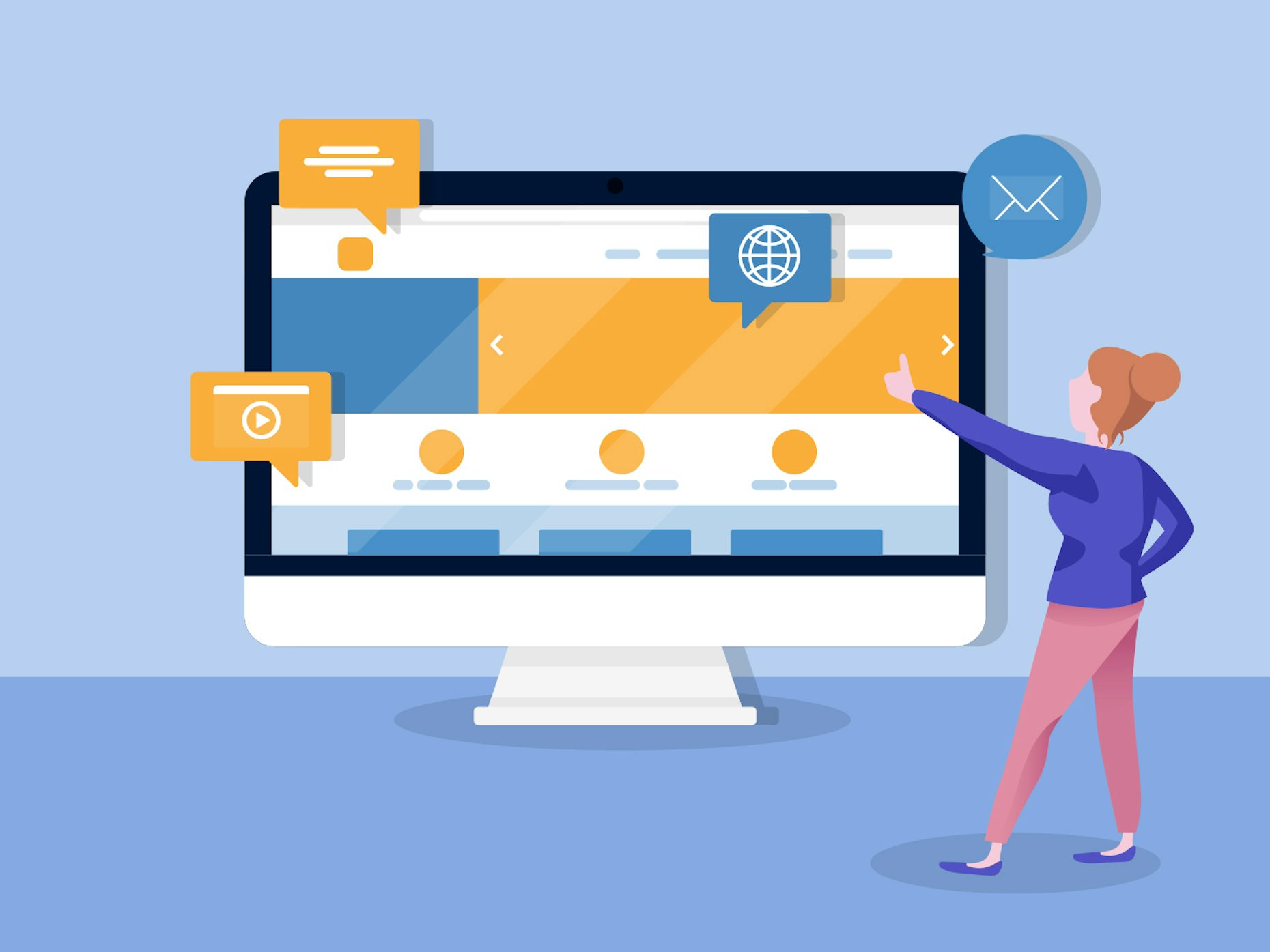All Categories
Featured
Table of Contents
- – What Is A Web Designer? (2022 Guide) - Brainst...
- – What Is Web Design? - Interaction Design Foun...
- – Arch Web Design: Top-rated Web Design Agency ...
- – Web Design - Uci Division Of Continuing Educa...
- – Awwwards - Website Awards - Best Web Design T...
- – Web Design And Engineering Major - Santa Clar...
- – Collaborate & Create Amazing Graphic Design ...
- – Powderkeg: Web Design Madison, Wi Tips and T...
- – Website Design - Best Ecommerce Web Design B...
- – Siteinspire - Web Design Inspiration Tips a...
- – Web Design - Uci Division Of Continuing Edu...
- – What Is Web Design? - Interaction Design Fo...
- – 34 Of The Best Website Designs To Inspire Y...
What Is A Web Designer? (2022 Guide) - Brainstation® Tips and Tricks:
Desktop apps require designers to create their style and send it to an advancement team who can then convert the style to code. Normally, this is the standard for big and/or complicated websites due to the fact that it allows the designer to focus on the general appearance and feel, while all the technical challenges are moved to the advancement team
What Is Web Design? - Interaction Design Foundation (Ixdf) Tips and Tricks:

Amazing designs can interact a lot of info in just a few seconds. This is made possible with the use of powerful images and icons. A quick Google search for stock images and icons will generate thousands of choices.
Arch Web Design: Top-rated Web Design Agency For Saas ... Tips and Tricks:
Your site visitors have numerous ways of connecting with your website depending upon their gadget (scrolling, clicking, typing, etc). The very best site styles simplify these interactions to provide the user the sense that they are in control. Here are a couple of examples: Never auto-play audio or videos, Never underline text unless its clickable Make sure all types are mobile-friendlyAvoid turn up Avoid scroll-jacking There are lots of web animation methods that can help your design grab visitor's attention, and permit your visitors to connect with your website by giving feedback.
Web Design - Uci Division Of Continuing Education Tips and Tricks:
Your users need to be able to quickly navigate through your website without encountering any structural concerns. If users are getting lost while trying to browse through your site, chances are "spiders" are too. A spider (or bot) is an automated program that explores your website and can determine its performance.
Awwwards - Website Awards - Best Web Design Trends Tips and Tricks:
Responsive, Comprehending the pros and cons of adaptive and responsive websites will help you identify which site builder will work best for your site style needs. You might come throughout posts online that talk about a whole lot of various website style styles (fixed, fixed, fluid, and so on). In today's mobile-centric world, there are only two website designs to utilize to appropriately create a website: adaptive and responsive.
Web Design And Engineering Major - Santa Clara University Tips and Tricks:

a header) is 25% of its container, that component will remain at 25% no matter the change in screen size. Responsive sites can also use breakpoints to produce a customized take a look at every screen size, but unlike adaptive sites that adjust only when they hit a breakpoint, responsive websites are constantly changing according to the screen size.(image credit: UX Alpaca)Great experience at every screen size, no matter the device type, Responsive website contractors are typically rigid that makes the style hard to "break"Lots of available templates to begin from, Requires substantial style and testing to ensure quality (when going back to square one)Without accessing the code, customized styles can be difficult, It is essential to keep in mind that site builders can consist of both adaptive and responsive functions.
Collaborate & Create Amazing Graphic Design For Free Tips and Tricks:
Wix has actually been around considering that 2006 and has given that developed a vast array of functions and design templates to fit almost every organization need. Today, it's considered one of the most convenient tools for newbies. Although it's difficult to pick a winner in this classification, here are few things to keep in mind: If you're looking for the most personalized experience, choose Page, Cloud.
Powderkeg: Web Design Madison, Wi Tips and Tricks:
, come into play. Here are some of the pros and cons to consider when looking to embrace one of these tools: Capability to produce custom-made responsive sites without having to compose code Unrivaled control over every component on the page Capability to export code to host in other places Intricate tools with high knowing curves Slower design procedure than adaptive website home builders, E-commerce websites are a crucial part of site style.
Website Design - Best Ecommerce Web Design By Shopify Tips and Tricks:

The standard five aspects of web style, Finest resources to find out web style at house, What is web design? You need to keep your style simple, clean and available, and at the same time, usage grid-based designs to keep design products organized and organized, thus creating a terrific overall design. Web design online courses.
Siteinspire - Web Design Inspiration Tips and Tricks:
, The web design track style Tree, House offers Home provides of video and interactive lessons on HTML, CSS, layouts, designs other web design basics.
Web Design - Uci Division Of Continuing Education Tips and Tricks:
Efficient website design brings a couple of various aspects together to promote conversions. These consist of: Compelling usage of negative space Clearly provided choices for the user(the less options the user has, the less likely they are to end up being overwhelmed and baffled)Apparent, clear calls to action Limited diversions and a well thought out user journey (ie.
What Is Web Design? - Interaction Design Foundation (Ixdf) Tips and Tricks:
Here are some examples: Clear calls to action are great website design; dirty ones are bad website design. High contrast typefaces are wise, reliable web style; low contrast typefaces that are hard to check out are poor website design. Here are a couple of other components to avoid: Distracting images and backgrounds. There are a couple of choose instances where a tiled background might be an excellent choice, in the majority of cases they're sidetracking. Non-responsive design. Nowadays your website merely needs to be mobile responsive. Uncertain links and buttons. Visitors shouldn't have to hunt for links and buttons, they must have the ability to rapidly see which images and pieces of text will take them to brand-new pages or confirm their options.
34 Of The Best Website Designs To Inspire You In 2022 Tips and Tricks:
On a platform like 99designs you can host a design contestby providing a supplying and quick designers submit designs send styles your specifications. Your web design might cost a few hundred to tens of thousands of dollars, depending on its intricacy. The more details they have, the more equipped they are to provide the best web style for you.
Learn more about Lovell Media Group LLC or TrainACETable of Contents
- – What Is A Web Designer? (2022 Guide) - Brainst...
- – What Is Web Design? - Interaction Design Foun...
- – Arch Web Design: Top-rated Web Design Agency ...
- – Web Design - Uci Division Of Continuing Educa...
- – Awwwards - Website Awards - Best Web Design T...
- – Web Design And Engineering Major - Santa Clar...
- – Collaborate & Create Amazing Graphic Design ...
- – Powderkeg: Web Design Madison, Wi Tips and T...
- – Website Design - Best Ecommerce Web Design B...
- – Siteinspire - Web Design Inspiration Tips a...
- – Web Design - Uci Division Of Continuing Edu...
- – What Is Web Design? - Interaction Design Fo...
- – 34 Of The Best Website Designs To Inspire Y...
Latest Posts
Siteinspire - Web Design Inspiration Tips and Tricks:
Html Responsive Web Design - W3schools Tips and Tricks:
What Is Web Design? - Interaction Design Foundation (Ixdf) Tips and Tricks:
More
Latest Posts
Siteinspire - Web Design Inspiration Tips and Tricks:
Html Responsive Web Design - W3schools Tips and Tricks:
What Is Web Design? - Interaction Design Foundation (Ixdf) Tips and Tricks: